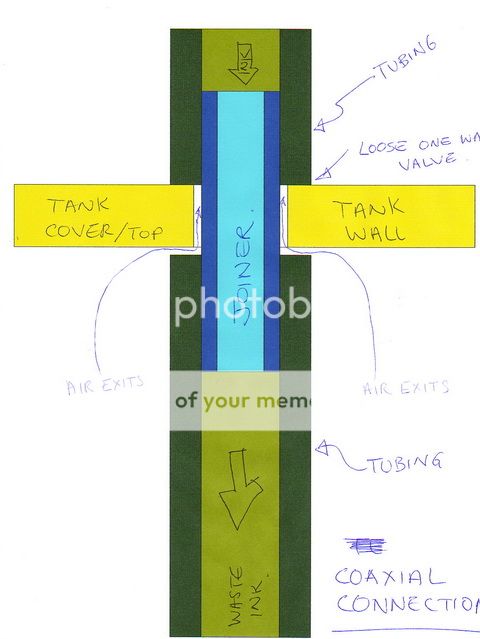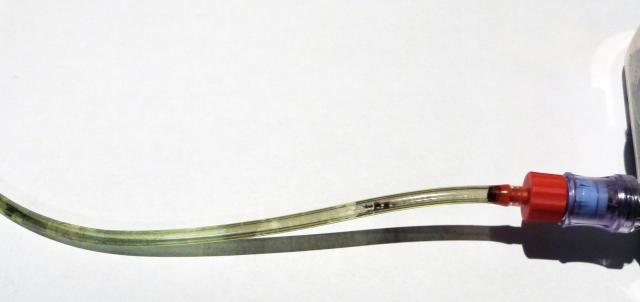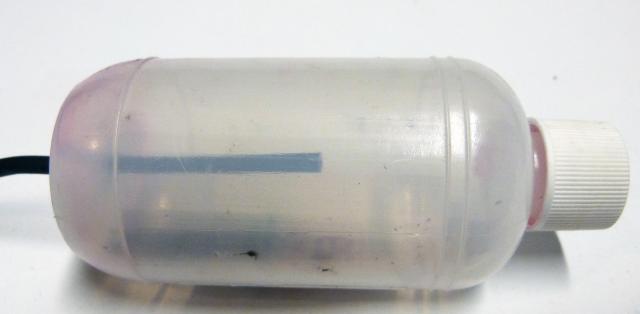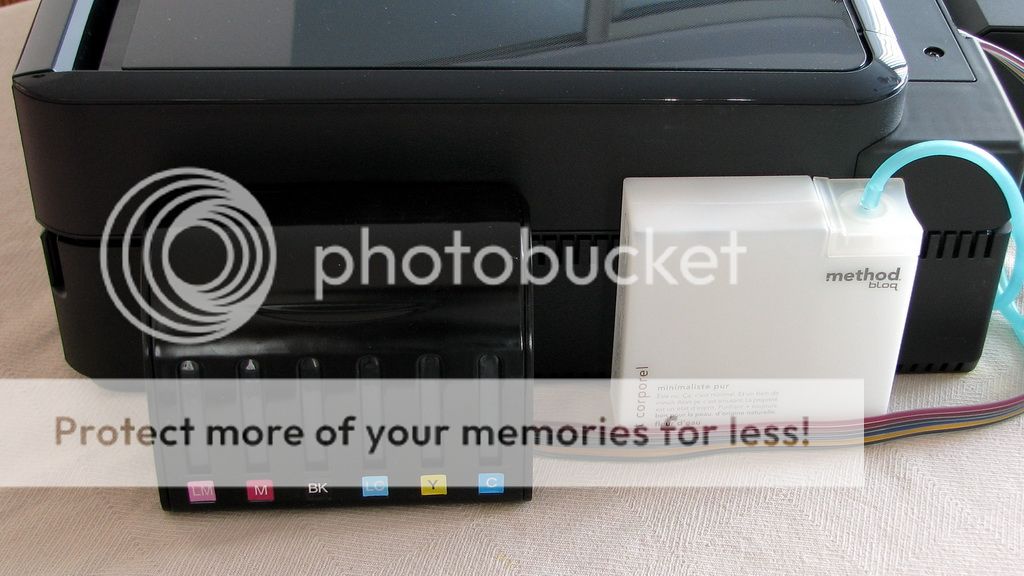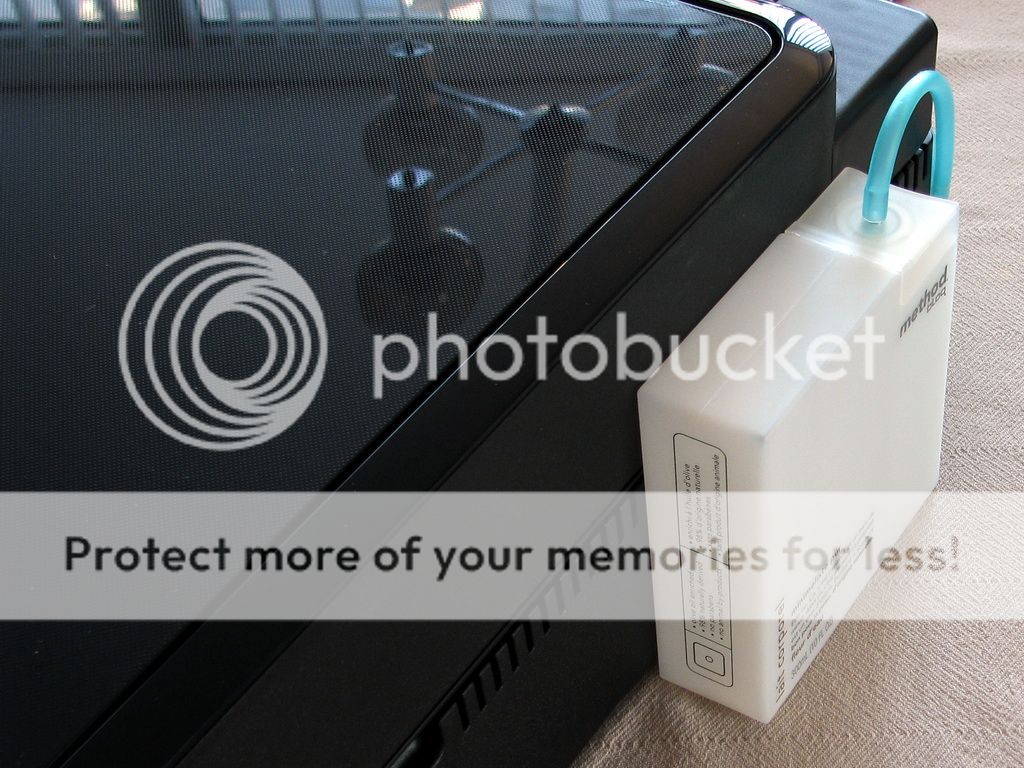By the time you get around to supporting the bladder so that it does not collapse when it has a vent hole, you can make yourself a better solution really.jtoolman said:I'll simply have to test in various ways.
One would be to let it hang over the side of the table and see what happens. I would only test it on my old R340 to see how it behaves.
Two would be to drill a tiny vent hole on the cap pre inflate the bag and stand it up inside a tin can. When almost full, recap it with a unmodified cap and dispose of it.
No biggie, it's just a thought. Never stop thinking and trying.
Joe
Use a bottle with a wide opening. Inside this bottle, float a piece of stytofoam. Stick a rod on the styrofoam like a sailmast. This rod will guide the styrofaom float up when the tank gets more ink. So the mast will stick out of the bottle when it is full. You could put a fluorescent flag on the mast or Here's the neat trick. Go to your dollar store and pick up one of those cheap button cell LED flashlights for a keychain.
Now wire the sailmast and styfoam so that when the tank fills up to a certain level it will light up the LED. Warning... the tank is geting full. If you want it on the front of the printer, Wire the LED so it comes to the front.
How to wire up the LED, Simple. On the float, place a conductive circular. pad you can use aluminum tape. When the float gets to the top, it touches two protruding wires that enter the tank. So it switches the circuit on. These two wires are just the broken circuit that the float shorts when it reaches to the top.


